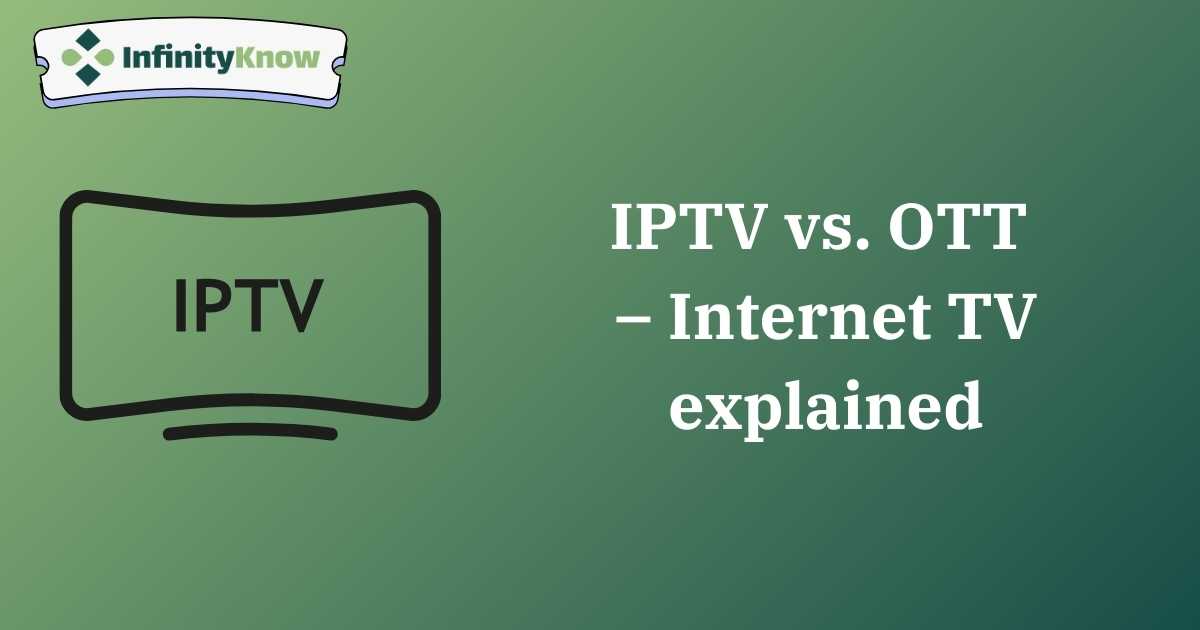Significant advancements have occurred in online video over the past decade. In 2011, video content comprised 53% of all internet traffic, a figure that surged to nearly 82% by 2021, making the promise of watching videos anytime, anywhere more accurate than ever.
Despite these advancements, certain concepts in internet What is IPTV remain challenging for many to differentiate, with IPTV and OTT being the most commonly confused terms. To leverage these technologies effectively, it is crucial to understand their meanings and how they can benefit your media company.
Here’s a quick overview: both IPTV and OTT distribute video content over the internet using the IP protocol. However, they differ in service type, infrastructure, and delivery methods.
What is IPTV?
IPTV, or “Internet-based Protocol Television,” is a digital television system that delivers live and on-demand video over the internet in a highly controlled manner. This service transmits TV and video through a privately managed network, such as a LAN, WAN, or ISP network, reserving bandwidth specifically for video delivery. This ensures superior image and sound quality without interruptions and enhanced network security.
Examples of IPTV services include Verizon Fios TV, DIRECTV STREAM, Movistar+, and Orange TV.

How Does IPTV Work?
IPTV functions similarly to web browsing. It stores TV programming and videos on servers, distributing copies whenever a viewer presses play on a TV channel or on-demand content. Using the multicast method, IPTV transmits data to multiple destinations simultaneously, efficiently using network infrastructure and bandwidth.
IPTV services are often bundled with other ISP offerings, like broadband and mobile lines, which can limit viewers to specific TV channels and VOD titles available in their region. Setting up IPTV involves some service installation and requires components like an internet connection, a router, and a device (usually a set-top box) to decode the signal and display content on the TV screen.
What is OTT?
OTT, or “Over-the-Top,” refers to streaming video and TV programming to any internet-connected device, bypassing traditional broadcast, cable, and satellite methods. OTT services, such as YouTube, Netflix, Amazon Prime Video, Disney+, and HBO Max, enable video viewing anytime, anywhere, on devices like smart TVs, laptops, tablets, smartphones, or video consoles.
How Does OTT Work?
OTTs are purely streaming content providers that use the internet to deliver video on demand (unicast method). Unlike IPTV, ISPs do not control OTT video delivery, viewing, or content copyrights. The infrastructure cost for OTTs is significantly lower, making their services more affordable.
However, OTT services must adapt to various networks and devices, affecting performance based on internet speed, bandwidth, and device connectivity. To avoid buffering issues, OTT applications adjust video quality to match network conditions and screen size.

IPTV vs. OTT – Pros and Cons
Content Delivery and Network: OTT uses an open network without infrastructure investment, while IPTV distributes content through a closed, high-bandwidth network. IPTV is reliable and offers high-quality service but is more expensive and complex to manage.
Components Needed: IPTV requires an internet connection, a router, and a set-top box or IP-based TV. OTT only needs an internet-compatible device connected to data or Wi-Fi.
Video Quality: OTT video quality depends on internet bandwidth and device speed. IPTV typically provides higher quality through a private delivery network.
Price: IPTV subscription packages are comparable to traditional cable or satellite TV, whereas OTT services can be as low as $4.99 per month or free with ad-based models.
Type of Content: IPTV offers an Electronic Program Guide (EPG) and various content types, including live TV, time-shifted TV, and VOD. OTT primarily offers a VOD catalog but increasingly includes live TV channels.

IPTV or OTT? What’s Suitable for Your Service
Choosing between IPTV and OTT traditionally depends on a company’s existing content delivery infrastructure and operational resources. OTT is cost-effective and flexible, allowing service personalization and lower prices but faces challenges with network reliability and scalability. IPTV offers higher service quality and easier management but incurs higher operational costs and slower innovation cycles.
Why Choose When You Can Fuse?
To provide future-facing TV experiences, a platform that combines the best of IPTV and OTT is ideal. The Kaltura TV platform, for example, merges OTT’s agility and flexibility with pay TV’s robustness and scalability, offering broadcast-grade availability for live and VOD TV viewing across all devices.
Adaptability and growth are crucial in today’s TV landscape, allowing operators to set up new channels, aggregate OTT services, modify pricing plans, launch promotions, and repackage content bundles efficiently. This seamless integration is essential for delivering compelling and reliable viewing experiences.
